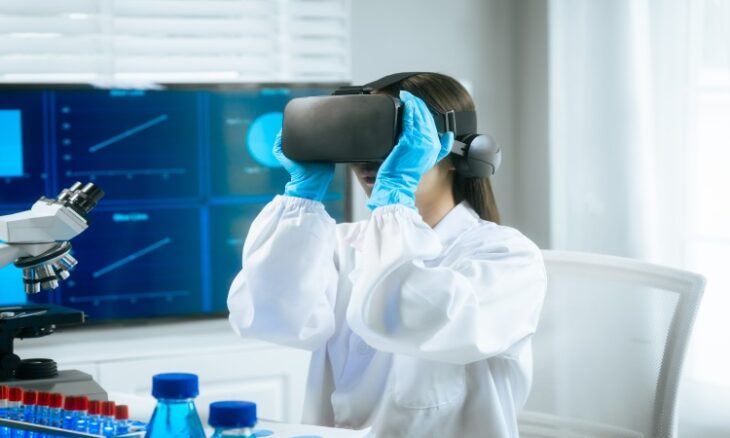SnkeXR medical AR system targets clinical innovation
Snke OS GmbH has announced the introduction of SnkeXR, a medical-grade augmented reality device built specifically for clinical environments. The system has been presented as a dedicated hardware solution intended to accelerate the adoption of immersive visual guidance within healthcare settings and integrate seamlessly into existing clinical workflows. With hospital systems increasingly exploring advanced digital tools, this launch positions the company within the growing medical AR segment.
The wearable glasses have been engineered to assist development teams in incorporating augmented reality into healthcare technology solutions. According to the company’s announcement, the system is expected to support product development activities, along with research and development teams seeking to create new clinical capabilities powered by AR. Rather than targeting consumer markets, the device focuses on enterprise-level medical use, reflecting a shift toward highly specialised AR hardware designed for surgical and clinical environments.
SnkeOS indicated that the glasses are suitable for various medical disciplines, including neurosurgery, orthopaedics, obstetrics and gynaecology, spine procedures, interventional radiology and electrophysiology, among other complex clinical areas. The platform aims to act as a versatile visual layer across multiple surgical pathways, aligning with the growing interest in computer-assisted interventions and enhanced visualisation. Additional suggested use cases include pre-operative planning, continued clinical education and remote procedural support, each of which has become more relevant as hospitals scale digital training and collaborative care.
In terms of technical specifications, the SnkeXR system includes a built-in surgical tracking mechanism cited to deliver 0.3-millimetre marker post accuracy. The hardware also features a medical-grade chassis and optical design intended to meet healthcare durability and safety standards. A depth camera has been integrated to capture surface anatomy and organ structures at 30 frames per second, allowing users to scan and visualise real-time anatomical data during planning or intervention. Through these capabilities, the company aims to position the device as a high-precision clinical tool rather than a general extended-reality headset.
The system includes an integrated headlight and stereoscopic loupe magnification of up to 3.5x, which may assist surgeons operating on small or delicate anatomical structures, or in cases requiring fine accuracy. Additional features include a detachable battery offering up to six hours of operation, alongside adjustable transparency, projection angle and focal plane control. These configuration options are intended to align the technology with varied procedural needs, minimising workflow disruption during surgical sessions or clinical use.
Snke OS stated that the motivation for developing the device stemmed from the limitations of existing AR hardware. Many existing commercial headsets were not created for medical use and therefore face challenges around sterility, accuracy, comfort and integration with surgical equipment. SnkeXR has been positioned as a dedicated alternative, designed from inception with medical device compliance and operating theatre requirements in mind. The company also emphasised that the platform is open, enabling medical device manufacturers to build customised AR-driven applications to suit their clinical specialities.
The unveiling aligns with comments previously shared by the organisation’s leadership during discussions about emerging surgical navigation technologies. During earlier industry briefings, the company highlighted that several healthcare manufacturers continue to rely on legacy augmented reality systems that were not originally engineered for complex medical use cases. The introduction of SnkeXR has therefore been described as a response to a perceived market gap in specialist AR platforms adapted to clinical demands.
Snke OS further explained that development progress has been swift and that a functional prototype has already been created. The organisation anticipates that the device will reach commercial readiness during the middle of 2027, positioning the launch approximately two years from the current announcement. With global investment in healthcare innovation continuing to expand, the company expects demand for advanced visualisation technology, surgical navigation tools and interoperable digital platforms to increase in parallel.
Industry observers note that AR adoption within medicine has accelerated in the last decade, especially in surgical navigation, procedural training and tele-mentoring. While early systems focused primarily on generic augmented reality experiences, current trends favour purpose-built solutions capable of meeting medical regulatory frameworks and precision requirements. SnkeXR represents a continuation of this trajectory, with the developer seeking to offer an open ecosystem for clinical partners and technology providers to build upon.
The release of SnkeXR marks a notable milestone for Snke OS in its efforts to integrate augmented reality into specialist healthcare domains further. As hospitals pursue enhanced accuracy, efficiency and clinician support through immersive tools, the company’s new glasses aim to serve as an enabling platform for a broad range of medical applications. The technology’s combination of surgical-grade precision, modular design and workflow-focused features positions the device as a high-end option for healthcare organisations evaluating advanced clinical visualisation systems.










